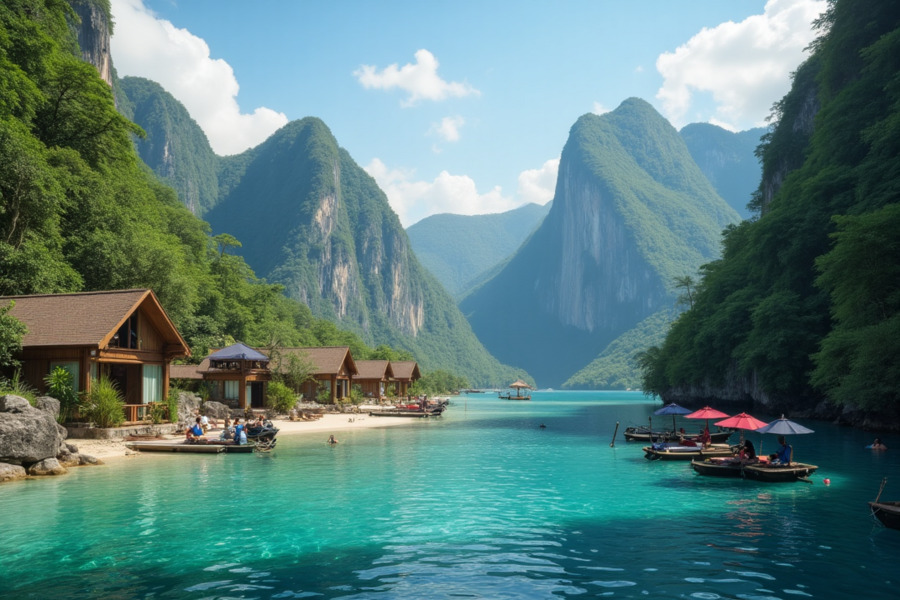≡-Huntington’s Inspiring Role in Shaping the Soul of Almost Heaven A Journey Through Culture, Community, and the Expanding Tapestry of Tourism in West Virginia – Viral of Today
<> Viral of Today <>
Home » Hotels And Resorts In United States » Huntington’s Inspiring Role in Shaping the Soul of Almost Heaven A Journey Through Culture, Community, and the Expanding Tapestry of Tourism in West Virginia Tuesday, July 1, 2025Huntington’s Role in Regional TourismIn Huntington, a city with a rich cultural landscape and growing vibrancy, tourism is gaining momentum. Although it’s not situated in the central part of the state, Huntington has carved out a unique identity in West Virginia’s travel scene. The city offers distinct attractions, such as Heritage Farm, the state’s only Smithsonian affiliate, and Camden Park, West Virginia’s only amusement park. These landmarks not only enrich the city’s character but also strengthen its presence in the regional tourism landscape.Residents have begun to embrace the evolving nature of their community. Local parks like Barboursville Park and the adventurous Hatfield-McCoy Trails at Rustic Ravines are becoming increasingly popular with both residents and newcomers. The growing interest in outdoor recreation highlights a shift in how people interact with the area’s natural offerings.Efforts to reshape public perception of Huntington have also been underway. While there may have once been concerns surrounding safety, many travelers are discovering that the reality doesn’t match the outdated image. Today’s visitors find a walkable, welcoming downtown, bustling with local shops, good food, and safe, vibrant spaces that enhance the overall travel experience.The Hidden Effort Behind the Visitor ExperienceTourism success in West Virginia wouldn’t be possible without the dedication of those working behind the scenes. In towns like Beckley, tourism professionals often make personal sacrifices to ensure a memorable experience for every guest. While travelers may enjoy high-tech comforts, some locals still rely on traditional means—like building fires to heat their homes in winter.These quiet efforts reflect the year-round preparation required to sustain tourism. Locals spend the off-season readying their communities for incoming guests, highlighting how much unseen labor goes into the seamless visitor experiences. For many residents, there’s pride in sharing their culture with those who may have previously misunderstood the state.Some visitors are surprised to learn that West Virginia is not an extension of another state but a place with its own deep cultural identity, friendly people, and authentic traditions. Those revelations often leave a lasting impression, reshaping outside perceptions for the better.Harpers Ferry and the Value of In-Person DiscoveryIn Harpers Ferry, an old-fashioned candy shop illustrates the importance of hands-on tourism. The store blends historical storytelling with sweet treats, offering a multi-sensory experience that keeps people coming back. It was noted that around 75% of their customers are tourists, demonstrating the store’s heavy reliance on foot traffic.Yet, running such a business isn’t without its difficulties. Weather conditions or power outages—especially during peak seasons—can mean losing thousands of dollars in revenue in a single day. Additionally, parking limitations and limited awareness among locals mean that few from the surrounding community stop by, despite the shop’s regional appeal.Still, the shop remains focused on creating an unforgettable experience. It’s not just about candy; it’s about sharing stories, educating visitors, and helping them connect to the history of everyday things—like the surprising role sugar once played as medicine. This kind of interaction, rooted in human connection and place-based learning, is something digital platforms simply can’t replicate.West Virginia’s Broader Tourism AppealAcross the state, West Virginia’s small towns—most with populations under 50,000—are offering something rare: peaceful, crowd-free escapes filled with natural beauty and personal charm. Visitors are discovering scenic landscapes, friendly locals, and a wide range of outdoor activities that make return trips inevitable.Among the top seasonal draws is the West Virginia Waterfall Trail, which garners strong interest in the warmer months. As summer fades into autumn, traveler questions often turn toward fall foliage hotspots and picturesque train rides, showcasing the year-round appeal of the Mountain State.To ensure residents are prepared to contribute to this growing industry, a free online hospitality course is offered through Blue Ridge Community and Technical College. This initiative aims to equip locals with the skills needed to provide high-quality visitor experiences, helping them actively shape how the state is perceived and enjoyed.The Economic Footprint of TourismThe numbers speak for themselves. According to the West Virginia Tourism Annual Report, visitors spend approximately $17 million per day in the state. This influx of spending significantly reduces the financial burden on local households, with an average tax savings of $835 per year.Employment in the tourism sector is equally impactful. The industry supports 60,000 jobs statewide, and projections indicate that 21,000 new positions open annually. These roles span a variety of skill levels, offering opportunities for long-term careers rooted in local communities.Perhaps most impressive is the state’s growth in visitor spending. While the national rate sits at 9%, West Virginia has experienced a 23% increase since 2019. These statistics underline tourism’s role as a backbone of the state economy, rather than a luxury industry.Past Summers and Community TraditionsAlthough today’s summers are increasingly associated with travel and exploration, not everyone has always had the means to vacation. In earlier decades, especially the 1990s, summers were often about earning extra income. Many locals—especially students and school workers—spent their time scanning classified ads and taking on seasonal jobs to make ends meet.Back then, family activities took center stage. Residents favored low-cost, memory-making moments like baseball games, camping, reunions, and swimming. These traditions, rooted in affordability and togetherness, still echo in how communities enjoy the season today.West Virginia’s Example for the WorldWhat’s happening in West Virginia is more than a local phenomenon—it’s part of a larger global shift in how people choose to travel. In an era where travelers are seeking authenticity over commercialism, regions that offer real connections, deep heritage, and community-driven experiences stand out.At the same time, areas that depend on tourism must ensure that local infrastructure and resident well-being are not overlooked. West Virginia’s balance of growth, heritage, and community offers a powerful model for others to follow.By blending sustainability, personal touch, and economic opportunity, this state is redefining what it means to welcome the world.«Enjoyed this post? Never miss out on future posts by following us»
This information will surprise you!
See also
- Read until the end to discover everything.
- Important information you need to know.
- Interesting facts and helpful tips.
Conclusion
Did you enjoy the news? Keep following us daily!













